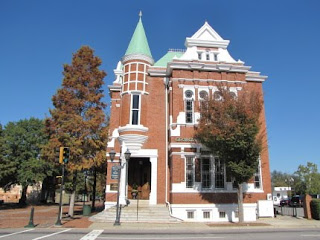AUGUSTA, Ga. — During the latter half of the 19th century and early part of the 20th century, cotton was indeed king here in Augusta.
In fact, in its prime, Augusta was the “second largest inland cotton market in the world,” according to the National Park Service, following only Memphis.
Nowhere is that more apparent that at the Cotton Exchange building at 8th and Reynolds streets. Built in the mid 1880s and designed by Enoch William Brown, the Queen Anne-style building today serves as a bank and is on the National Register of Historic Places.
At the building, people could buy and sell cotton — known as white gold to many — from across the Georgia. In an average year, between 400,000 and 500,000 bales of cotton were traded at the Exchange annually.
In addition to a cotton exchange, the building served as Augusta’s business center.
The cotton industry in Georgia declined in the 1920s after the boll weevil invaded, and the Cotton Exchange eventually fell into disrepair. Cotton brokers last used the Exchange for its intended purpose in 1964.
But, the building has been restored and today includes a number of exhibits about cotton’s place in Augusta history. Perhaps the most-prized artifact is a 45-foot blackboard that once featured market information.
“The Cotton Exchange had been the economic center for the city for many years and now it is coming full circle,” The Augusta Chronicle quoted the president of the Augusta Convention and Visitor’s Bureau as saying in 2003.




